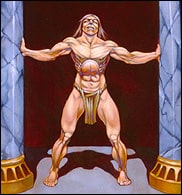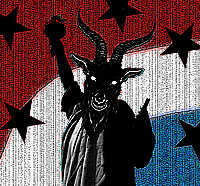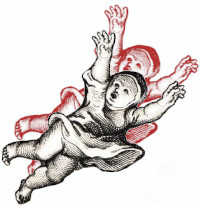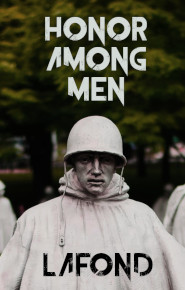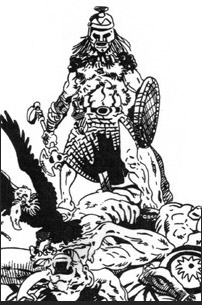In primal cultures enslavement of adult males is rare. Generally, enough boys and women will be adopted into the victorious group to replace losses, and the men will be killed. In most such societies, slaves are adopted after an initiation period, and recognized as full members of the tribe. Primal groups rarely made racial distinctions, but in-group out-group distinctions based on social bonds. Some Native American tribes adopted so many whites that they were, in reality, mixed-race tribes. This also helped preserve the tribe through the inherited immunity to invasive diseases on the part if the mixed children.
Moderns see slavery as wicked.
The ancients saw it as anything from a grim necessity, to a mercy [Aristotle] to a degradation [Romans].
The factors that make for enslavement as we understand it are:
1. Surplus food, either through agriculture or livestock domestication, is the prerequisite condition for chattel slavery.
2. War, famine or misfortune, is necessary for the generation of captives.
3. Materialism, as a central ethic, is necessary to induce people to live as livestock, and to induce others to exploit them for gain, enjoyment or food, rather than helping them.
It is a common belief that “Indians did not make good slaves.”
The actual situation in post-contact America was that civilized Indians made excellent slaves, except for the fact that they were not immune to the diseases introduced by Europeans and Africans, small pox having been introduced to the Aztecs via an African servant of the Spanish.
In Eastern North America, the Natives across the Northern Reaches, where hunting predominated, died fighting or languished in captivity, yet the Indians of the Carolinas, Georgia, Northern Florida, and the Mississippi Basin, where maize cultivation was the predominant food source, made good slaves and eager slave owners. It is no accident that the American plantation system spread in areas where slavery was common among Indians, and did not spread in those areas were hunting societies were displaced by former white slaves.
As soon as the American Revolution was won there were two movements concerning servitude, wealthy planters wanted to expand black slavery and their ability to recover black and white slaves, and poor whites moving west into the Ohio Country immediately voted in laws banning slavery, all slavery, not just the enslavement of blacks, which was chiefly only a concern to them as an evil because it was hard to compete with slave labor. In 1787 as seen in the following link, just as former indentured servants and their sons and grandsons moved into the Old Northwest territory, they immediately outlawed slavery at the same time that the wealthy class of politicians in Philadelphia sought to justify slavery as a founding principal of the new nation.
The notion of spreading slavery across the Northern U.S. was foolish, even from a slave master perspective, as no grass roots servitude systems existed and the cultural justification generally present to encourage mass servitude in a civilized setting was absent.
A good example of a civilization not far removed from chieftom status, existing at about the technology level of the first Near Eastern Civilizations in Sumer and Egypt, is that of the Aztecs of 1454 Mexico, living on the bones of an ancient civilization, but themselves only a few generations removed from a nomadic hunting lifeway. After their conquest of Mexico, they still sometimes found themselves at the mercy of the despised merchants of civilization. The following quote is taken from Inga Clendinnen’s monumental cultural history, Aztecs, concerning how merchants living under Aztec rule capitalized on suffering, manipulating their masters’ subjects and their masters through the accumulation of goods.
“…in the famine year One Rabbit (1454) when unseasonably early frosts had for three years blighted the maturing maize, and Moctezoma the Elder released his people from their duties, to survive as best they could. In those bitter days even nobles sold their children into slavery, and the merchants bought them: ‘this was the time they bought people’ [says an Aztec chronicler]; ‘they purchased men for themselves. The merchants were those who had plenty, who prospered; the greedy, the well-fed man, the covetous…the mean, the stingy, the selfish. Into the homes of such men they crowded together into bondage.’”
Of particular interest is that these slaves were often eaten by their owners after being killed in ritual sacrifices, and that by providing such gifts to the warrior class, merchants sought entry into its ranks through the leveraged use of material goods to gain “honor,” which was very insulting to the warrior class, in the same way that the notion that the son of Hrothgar is seen as the social equivalent—even superior—to the hero Beowulf who saves his father’s kingdom, was insulting to the German warrior class of a later age, who had their own merchant class to hate.
Such anti-merchant sentiments arise in societies at about the same time as commercial slave trading and, in later societies, industrialization [which brings its own dehumanizing forms of servitude] understandably so, as the defeated warrior is often the object of the commerce.




